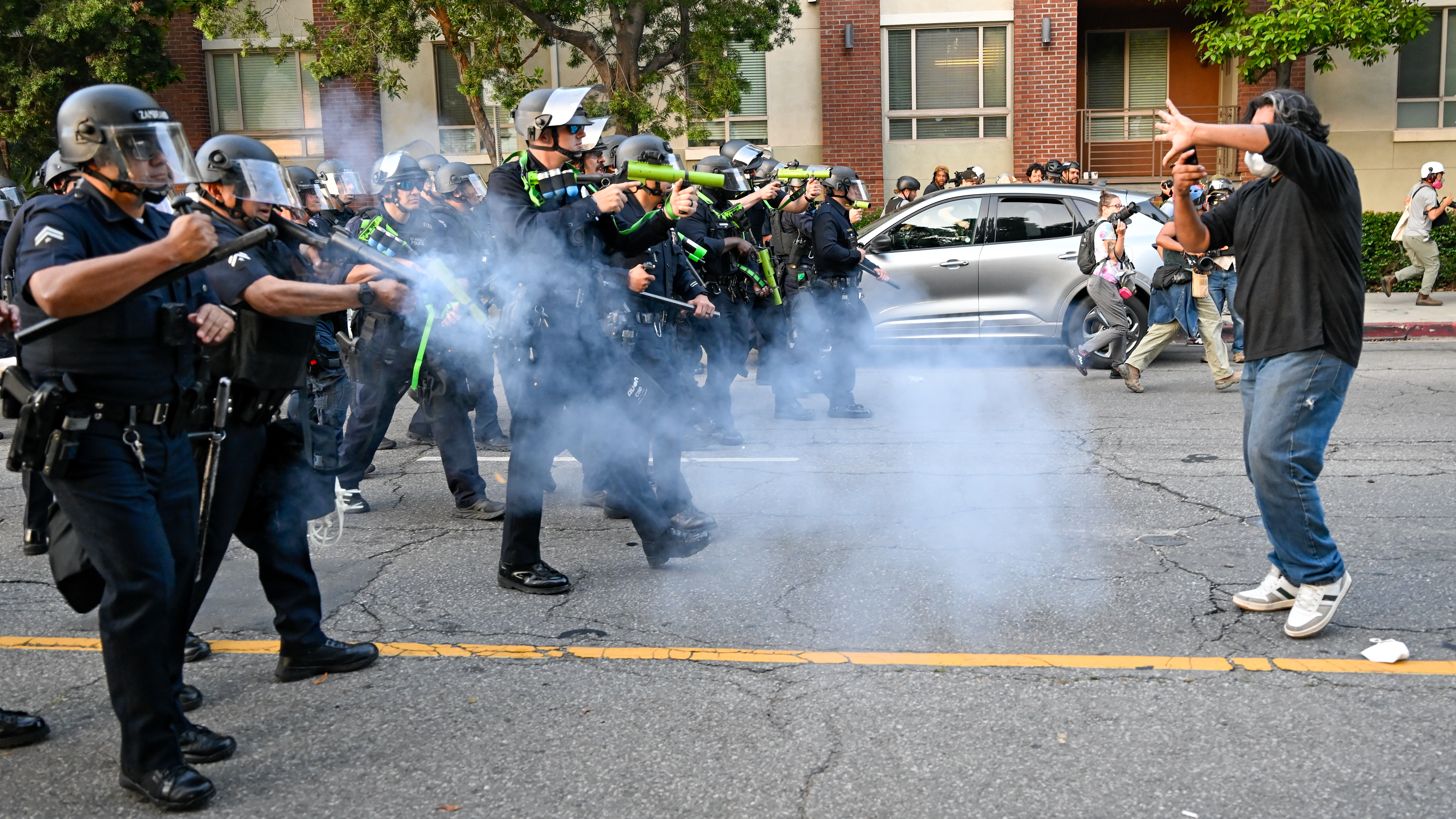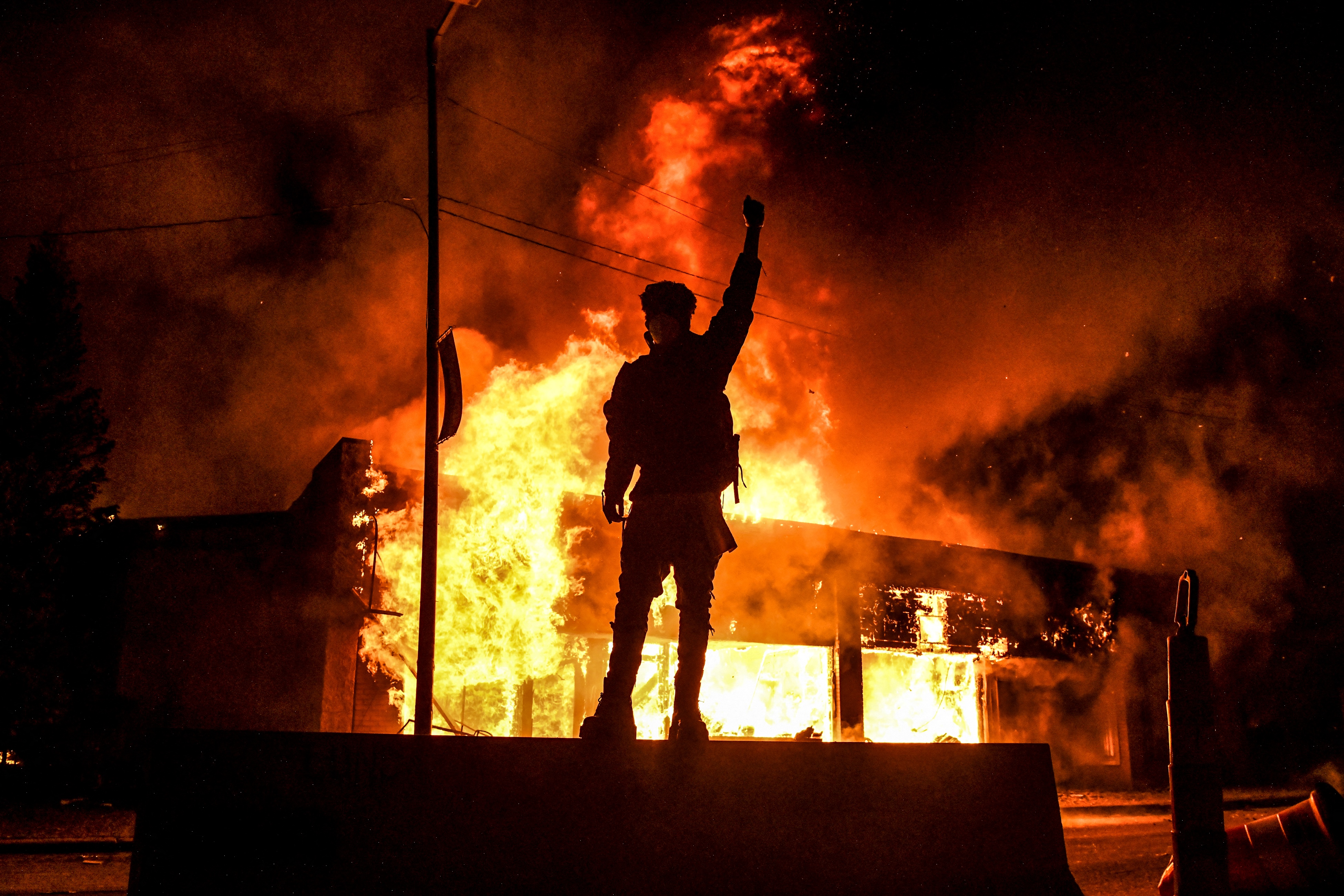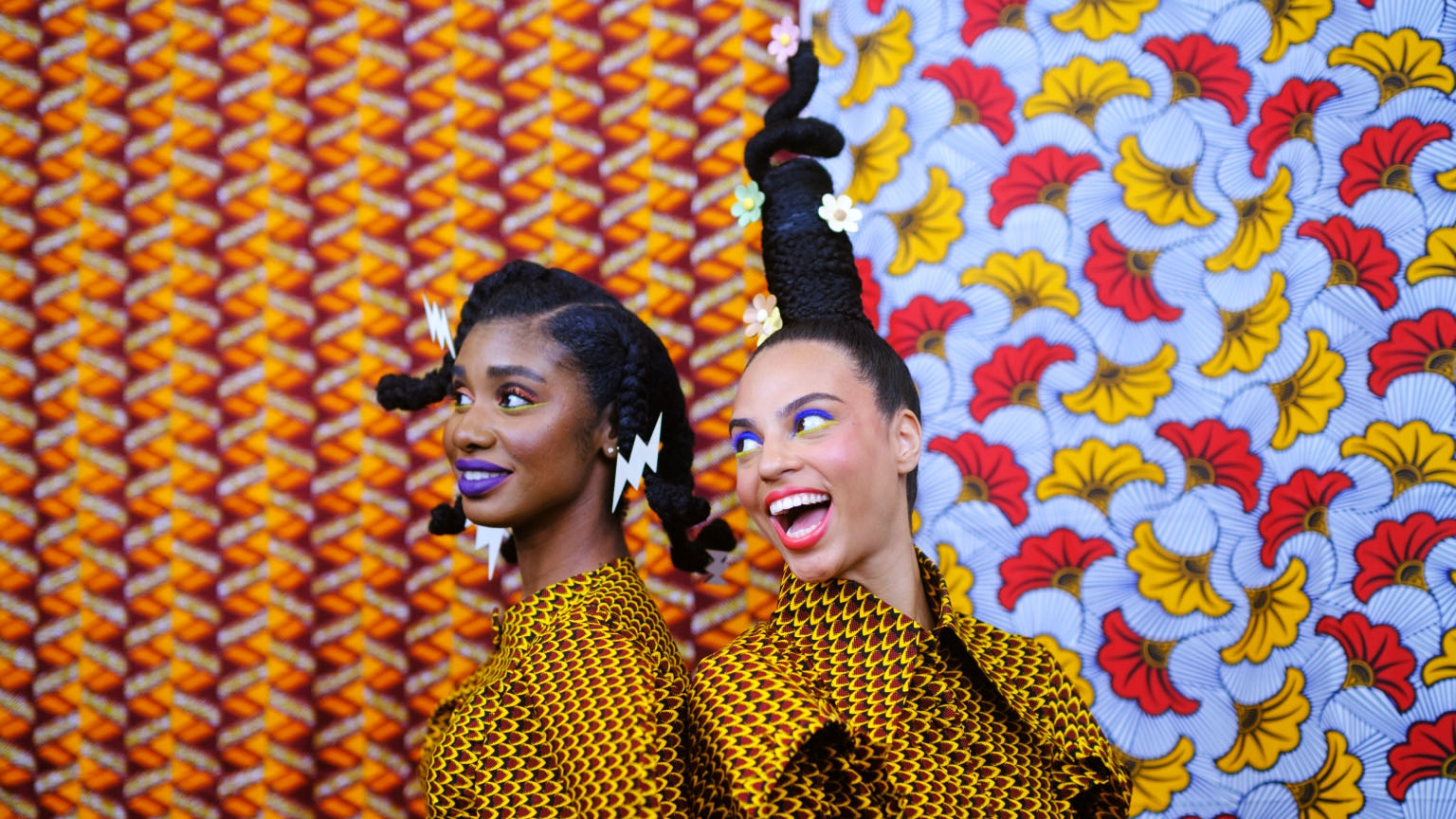What to keep in mind when photographing political protests and demonstrations
How to photograph protests safely: A guide for modern photojournalists

When I first had the idea of writing this article, I was going to introduce the topic – what you need to know when photographing protests and demonstrations – by mentioning a scene from the 2024 movie, “Civil War,” which includes two photographers as main characters (played by actors Kirsten Dunst and Cailee Spaeny).
At the beginning of the movie, both photographers are documenting a protest, which quickly turns into a brawl between police and protesters. During the fight, Dunst’s character witnesses a police officer strike Spaeny’s character in the face with a billy club. Dunst’s character quickly goes over to lead Spaeny’s character away from the altercation to safety.
However, as I write these words, it seems a scene from a frightening fictional movie has turned into terrifying reality, at least in the U.S. I’m referring to what’s currently taking place in Los Angeles, which has been dealing with several days of unrest and political demonstrations, a response to Immigration and Customs Enforcement (ICE) raids that have been taking place across the city. It’s a dangerous place for anyone, including photographers.
Rubber bullets
But what photographers and content creators should understand is that they’re not merely being hit with billy clubs. In fact, there have already been reports of more than one incident of photographers being shot by rubber bullets as they attempted to cover the protests. The first occurrence, according to multiple sources, including The Guardian, took place this past Sunday, June 8. It’s when British news photographer Nick Stern, who is based in LA, was shot in the leg and wounded as he was covering the conflict between LA police and anti-ICE protesters. The wound was serious enough that Stern needed to undergo emergency surgery. According to The Guardian, “Stern believes he was probably hit by a non-lethal round that deputies were using along with flash-bang stun grenades for crowd control.”
But another incident also took place this past Sunday to another British news photographer: According to the New York Post, Toby Canham, a British news photographer working on assignment for The Post, was shot in the head with a rubber bullet as he was capturing video of both police and protesters at the 101 Freeway from an elevated location. But what’s both remarkable and horrifying is that Canham actually captured footage of the moment on video when a California police officer fired off the rubber bullet, which injured the photographer.
According to The Post, the photographer captures footage of a California Highway Patrol (CHP) officer who, “suddenly turned his weapon toward him and fired from about 100 yards away.” The Post also reported that the photographer, who was British Army soldier and is currently based out of LA, “spent Monday at the hospital for whiplash and neck pain. He was left with a giant bruise on his forehead.”
Such protests, which began in LA, have spread throughout the country and are taking place in cities like New York, Chicago, Dallas, Atlanta, among others, and appear to be the largest protests taking place since the George Floyd protests in May, 2020.
The best camera deals, reviews, product advice, and unmissable photography news, direct to your inbox!
What’s clear from both the June 8 shooting incidents and the protest scene from “Civil War” is that, at the very least, they should serve as reminders to photojournalists and photographers that such demonstrations can be very dangerous.
All photographers need to understand that they can be targets, a notion supported by a recent story in The Business Journal, which reported that, “More than two dozen journalists have been injured or roughed up while covering protests against immigration raids in Los Angeles, leading press freedom groups to question whether law enforcement has been deliberately targeting reporters on the story.”
Follow these rules
So, if you decide to capture photos and footage from the front lines, even when you’re clearly marked as press, there’s always a possibility you could be injured or even killed. But if you do decide to capture photos of protests and demonstrations, we’ve compiled the following resources that you should consult before you go:
1. Be Safe: For starters, be sure to mark and identify yourself as a member of the press. Of course, this doesn’t ensure your safety, but it might help. Also, consider wearing protective gear, like a vest or helmet. For more on safety and other issues, consult Photoshelter’s “WATCH: Safety for Photojournalists Attending Protests” webpage, which includes a recorded webinar and lots of links to other resources on how photographers can protect themselves against police attacks while photographing protests.
2. Know Your Rights: The American Civil Liberties Union, a U.S. non-profit, non-partisan organization that attempts to defend and preserve individual rights and liberties guaranteed by the U.S. Constitution, has a great resource for photographers titled, “If Stopped for Photographing in Public.” It begins by stating, “Taking photographs and video of things that are plainly visible in public spaces is a constitutional right—and that includes transportation facilities, the outside of federal buildings, and police and other government officials carrying out their duties.” It includes other important information that all photographers should take note of.
3. Photography Don'ts: Wired.com also has an excellent resource, titled, “How to Take Photos at Protests Safely—and Responsibly,” which includes a number of practical things you shouldn’t do at demonstrations and protests, including “Don’t suddenly stop to take a photo,” and “Do not get in anyone’s face.” The article includes other valuable insights, as well.
4. Learn from other photographers and past projects: You can learn a lot from checking out how other photographers have covered past protests and demonstrations. For instance, Digital Camera World published photographer Alistair Campbell’s account of how he covered a protest in the United Kingdom: “Photographing the frontline: Covering a Black Lives Matter protest.”
Protest portfolios you should study
To learn more about how U.S. photographers captured images in the U.S. during the George Floyd protests, I interviewed several photographers, photo editors, and educators on projects that caught their attention in 2020. One was street photographer Steven John Irby, who captured a number of incredible images during the George Floyd protests and posted the images on his Instagram feed, including this incredible image.
Another person I talked to about the George Floyd protests was Los Angeles-based visual journalist Tara Pixley, who suggested photographers look at the following stories:
From The New Yorker Magazine: Photo Booth—Scenes from a Weekend of Mass Protest in New York City
From Time Magazine: After the Death of George Floyd-Voices Behind the Most Powerful Protest Photos
From Time Magazine: 'We Just Want to Live.' Photographers Share What They Experienced While Covering Protests Across America
When I asked Pixley in 2020 why she selected these online galleries, she replied, “I selected these photo galleries because I think they show a wide breadth of approaches to photographing that feel to me to have been done (mostly) with care and consideration for those depicted. They’re showing a lot of angles on this fight for social justice beyond capturing just the easy action of police violence/conflict with protestors, looting/fires/tear gas or signs. The most interesting and powerful photos are often the most complex. Simple imagery can be wonderful to get a clear and impactful statement across but the complexity of this situation calls for complex and thoughtful compositions.”
She continues, “I am a firm believer in the power of photography to inform the public and inspire change. I also recognize that images can be used to oppress, incriminate and dehumanize certain populations. In this historical moment, when we have the capacity to amplify the truths behind police brutality; recognize the lived experiences of Black and brown people under state surveillance and police violence; and document one of the largest civil rights movements in human history, we must wield that power with care and thoughtful consideration.”
President of Magnum Photos says AI is killing photojournalism
Kirsten Dunst's new Civil War movie is a love letter to photojournalism
Terry Sullivan has tested and reported on many different types of consumer electronics and technology services, including cameras, action cams, mobile devices, streaming music services, wireless speakers, headphones, smart-home devices, and mobile apps. He has also written extensively on various trends in the worlds of technology, multimedia, and the arts. For more than 10 years, his articles and blog posts have appeared in a variety of publications and websites, including The New York Times, Consumer Reports, PCMag, Worth magazine, Popular Science, Tom’s Guide, and Artnews.
He has produced many articles and has appeared on TV to discuss a variety of topics, including the best cameras and devices to buy during the holidays, how photographers and content creators can get the most out of their point-and-shoots or phones, and how consumers can be creative when shooting a photograph, producing a video, or recording a song on a phone. He may also have the dubious achievement of being the first person (or one of the first) to create a music video entirely on an iPhone, created from media (the music itself, photos, digital art and video clips) produced on the device itself. Additionally, he is a musician, photographer, artist, and teacher.
You must confirm your public display name before commenting
Please logout and then login again, you will then be prompted to enter your display name.



